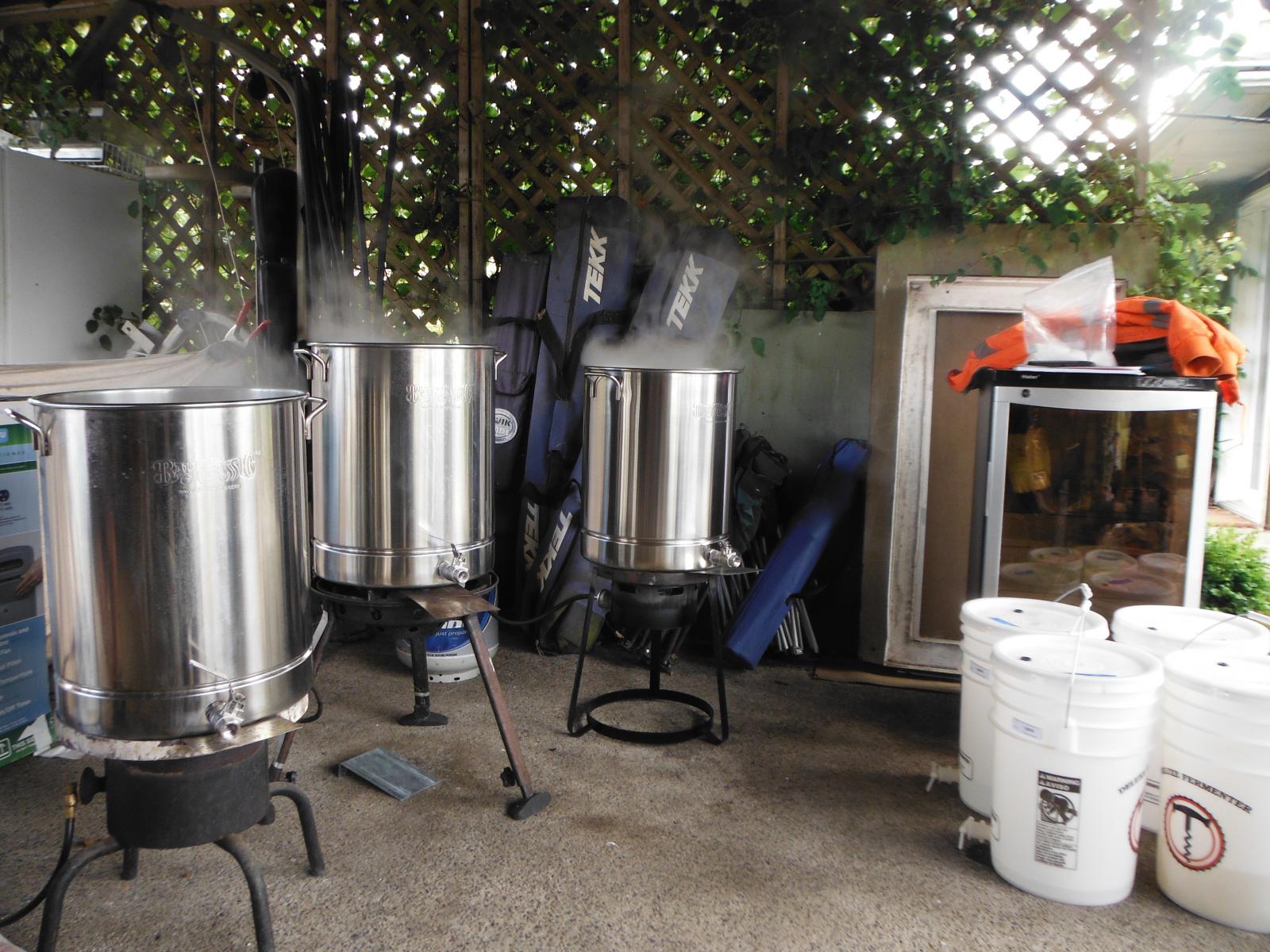Getting ready to jump from extract to AG. I am feeling brave enough to give it a go. I would like some feedback on my recipe if anyone is so inclined.
I will be using a blue 5 gallon igloo cooler with a stainless braided drain tube for my mash tun
5 gallon single infusion batch sparge, 60 min boil
Numbers work out as follows:
OG 10.042, FG 1.007, ABV 4.59, IBU 19.21
8 lb American - Pale 2-Row
1 lb Canadian - Honey Malt
0.5 lb Belgian - Biscuit 35
9.5 lb Total
0.65 oz Cluster Hops at 60 minutes (not to keen on super hopped brews which is why I kept the hops down a bit)
Mash- Strike water @ 150 F 60 min
Sparge- Water @ 180 F 10 min
US-05 dry yeast
Since this will be my 1st attempt I figured my efficiency fairly low at 60%
If I understand this correctly the only thing this would do is up my ABV ( correct ?)
Any feedback is welcome
I will be using a blue 5 gallon igloo cooler with a stainless braided drain tube for my mash tun
5 gallon single infusion batch sparge, 60 min boil
Numbers work out as follows:
OG 10.042, FG 1.007, ABV 4.59, IBU 19.21
8 lb American - Pale 2-Row
1 lb Canadian - Honey Malt
0.5 lb Belgian - Biscuit 35
9.5 lb Total
0.65 oz Cluster Hops at 60 minutes (not to keen on super hopped brews which is why I kept the hops down a bit)
Mash- Strike water @ 150 F 60 min
Sparge- Water @ 180 F 10 min
US-05 dry yeast
Since this will be my 1st attempt I figured my efficiency fairly low at 60%
If I understand this correctly the only thing this would do is up my ABV ( correct ?)
Any feedback is welcome











![Craft A Brew - Safale S-04 Dry Yeast - Fermentis - English Ale Dry Yeast - For English and American Ales and Hard Apple Ciders - Ingredients for Home Brewing - Beer Making Supplies - [1 Pack]](https://m.media-amazon.com/images/I/41fVGNh6JfL._SL500_.jpg)
















































